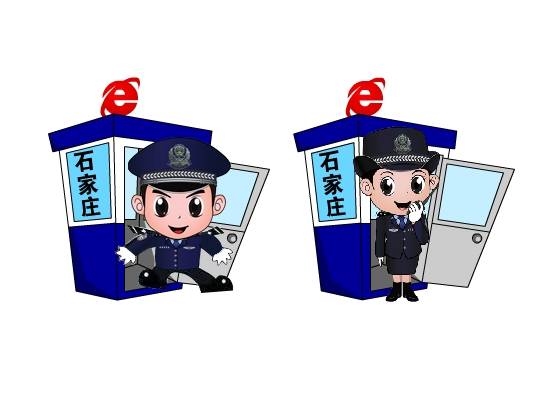实例介绍
【实例简介】
【实例截图】
【实例截图】

【核心代码】
using System;
using System.Drawing;
using System.Collections;
using System.ComponentModel;
using System.Windows.Forms;
using System.Data;
using System.Threading;
namespace Multi
{
/// <summary>
/// Form1 的摘要说明。
/// </summary>
public class Form1 : System.Windows.Forms.Form
{
private System.Windows.Forms.Button button1;
private System.Windows.Forms.Button button2;
private System.Windows.Forms.Button button3;
/// <summary>
/// 必需的设计器变量。
/// </summary>
private System.ComponentModel.Container components = null;
public Form1()
{
//
// Windows 窗体设计器支持所必需的
//
InitializeComponent();
//
// TODO: 在 InitializeComponent 调用后添加任何构造函数代码
//
}
/// <summary>
/// 清理所有正在使用的资源。
/// </summary>
protected override void Dispose( bool disposing )
{
if( disposing )
{
if (components != null)
{
components.Dispose();
}
}
base.Dispose( disposing );
}
#region Windows 窗体设计器生成的代码
/// <summary>
/// 设计器支持所需的方法 - 不要使用代码编辑器修改
/// 此方法的内容。
/// </summary>
private void InitializeComponent()
{
this.button1 = new System.Windows.Forms.Button();
this.button2 = new System.Windows.Forms.Button();
this.button3 = new System.Windows.Forms.Button();
this.SuspendLayout();
//
// button1
//
this.button1.Location = new System.Drawing.Point(64, 24);
this.button1.Name = "button1";
this.button1.Size = new System.Drawing.Size(168, 23);
this.button1.TabIndex = 0;
this.button1.Text = "启动线程一";
this.button1.Click = new System.EventHandler(this.button1_Click);
//
// button2
//
this.button2.Location = new System.Drawing.Point(64, 56);
this.button2.Name = "button2";
this.button2.Size = new System.Drawing.Size(168, 23);
this.button2.TabIndex = 1;
this.button2.Text = "启动线程二";
this.button2.Click = new System.EventHandler(this.button2_Click);
//
// button3
//
this.button3.Location = new System.Drawing.Point(64, 88);
this.button3.Name = "button3";
this.button3.Size = new System.Drawing.Size(168, 23);
this.button3.TabIndex = 2;
this.button3.Text = "显示一个模式对话框";
this.button3.Click = new System.EventHandler(this.button3_Click);
//
// Form1
//
this.AutoScaleBaseSize = new System.Drawing.Size(6, 14);
this.ClientSize = new System.Drawing.Size(296, 134);
this.Controls.Add(this.button3);
this.Controls.Add(this.button2);
this.Controls.Add(this.button1);
this.MaximizeBox = false;
this.Name = "Form1";
this.StartPosition = System.Windows.Forms.FormStartPosition.CenterScreen;
this.Text = "演示创建多线程程序";
this.ResumeLayout(false);
}
#endregion
/// <summary>
/// 应用程序的主入口点。
/// </summary>
[STAThread]
static void Main()
{
Application.Run(new Form1());
}
public void ThreadOne()
{//定义线程一
MessageBox.Show("这是线程一产生的对话框,你可以不关闭它就可以执行程序的其他功能!","信息提示",MessageBoxButtons.OK,MessageBoxIcon.Information);
}
public void ThreadTwo()
{//定义线程二
MessageBox.Show("这是线程二产生的对话框,你可以不关闭它就可以执行程序的其他功能!","信息提示",MessageBoxButtons.OK,MessageBoxIcon.Information);
}
private void button1_Click(object sender, System.EventArgs e)
{//启动线程一
Thread MyThreadOne=new Thread(new ThreadStart(ThreadOne));
MyThreadOne.Start();
}
private void button2_Click(object sender, System.EventArgs e)
{//启动线程二
Thread MyThreadTwo=new Thread(new ThreadStart(ThreadTwo));
MyThreadTwo.Start();
}
private void button3_Click(object sender, System.EventArgs e)
{//显示一个模式对话框
MessageBox.Show("这是程序主线程产生的对话框,你必须关闭它才可以执行程序的其他功能!","信息提示",MessageBoxButtons.OK,MessageBoxIcon.Information);
}
}
}
好例子网口号:伸出你的我的手 — 分享!
小贴士
感谢您为本站写下的评论,您的评论对其它用户来说具有重要的参考价值,所以请认真填写。
- 类似“顶”、“沙发”之类没有营养的文字,对勤劳贡献的楼主来说是令人沮丧的反馈信息。
- 相信您也不想看到一排文字/表情墙,所以请不要反馈意义不大的重复字符,也请尽量不要纯表情的回复。
- 提问之前请再仔细看一遍楼主的说明,或许是您遗漏了。
- 请勿到处挖坑绊人、招贴广告。既占空间让人厌烦,又没人会搭理,于人于己都无利。
关于好例子网
本站旨在为广大IT学习爱好者提供一个非营利性互相学习交流分享平台。本站所有资源都可以被免费获取学习研究。本站资源来自网友分享,对搜索内容的合法性不具有预见性、识别性、控制性,仅供学习研究,请务必在下载后24小时内给予删除,不得用于其他任何用途,否则后果自负。基于互联网的特殊性,平台无法对用户传输的作品、信息、内容的权属或合法性、安全性、合规性、真实性、科学性、完整权、有效性等进行实质审查;无论平台是否已进行审查,用户均应自行承担因其传输的作品、信息、内容而可能或已经产生的侵权或权属纠纷等法律责任。本站所有资源不代表本站的观点或立场,基于网友分享,根据中国法律《信息网络传播权保护条例》第二十二与二十三条之规定,若资源存在侵权或相关问题请联系本站客服人员,点此联系我们。关于更多版权及免责申明参见 版权及免责申明



网友评论
我要评论